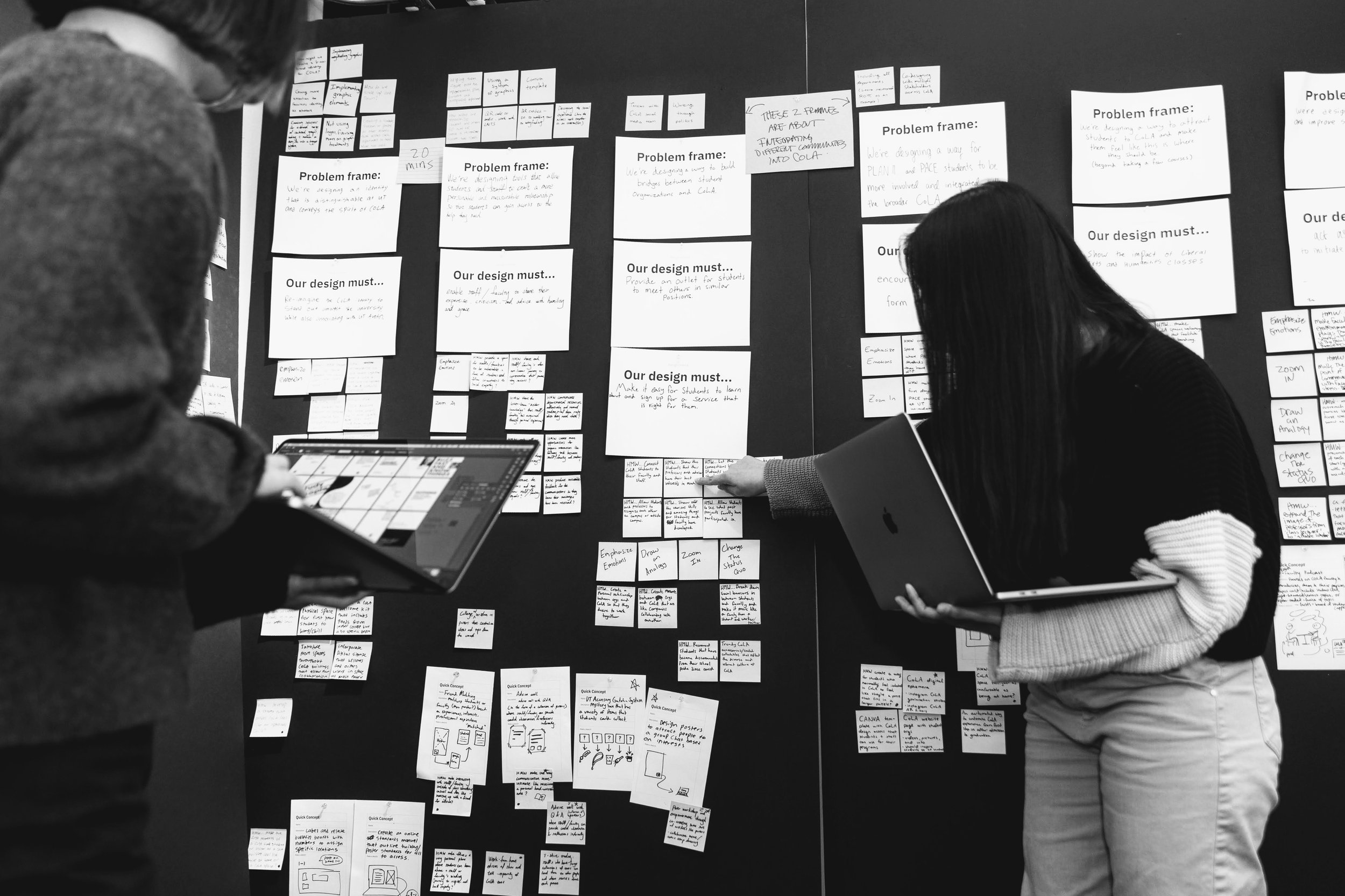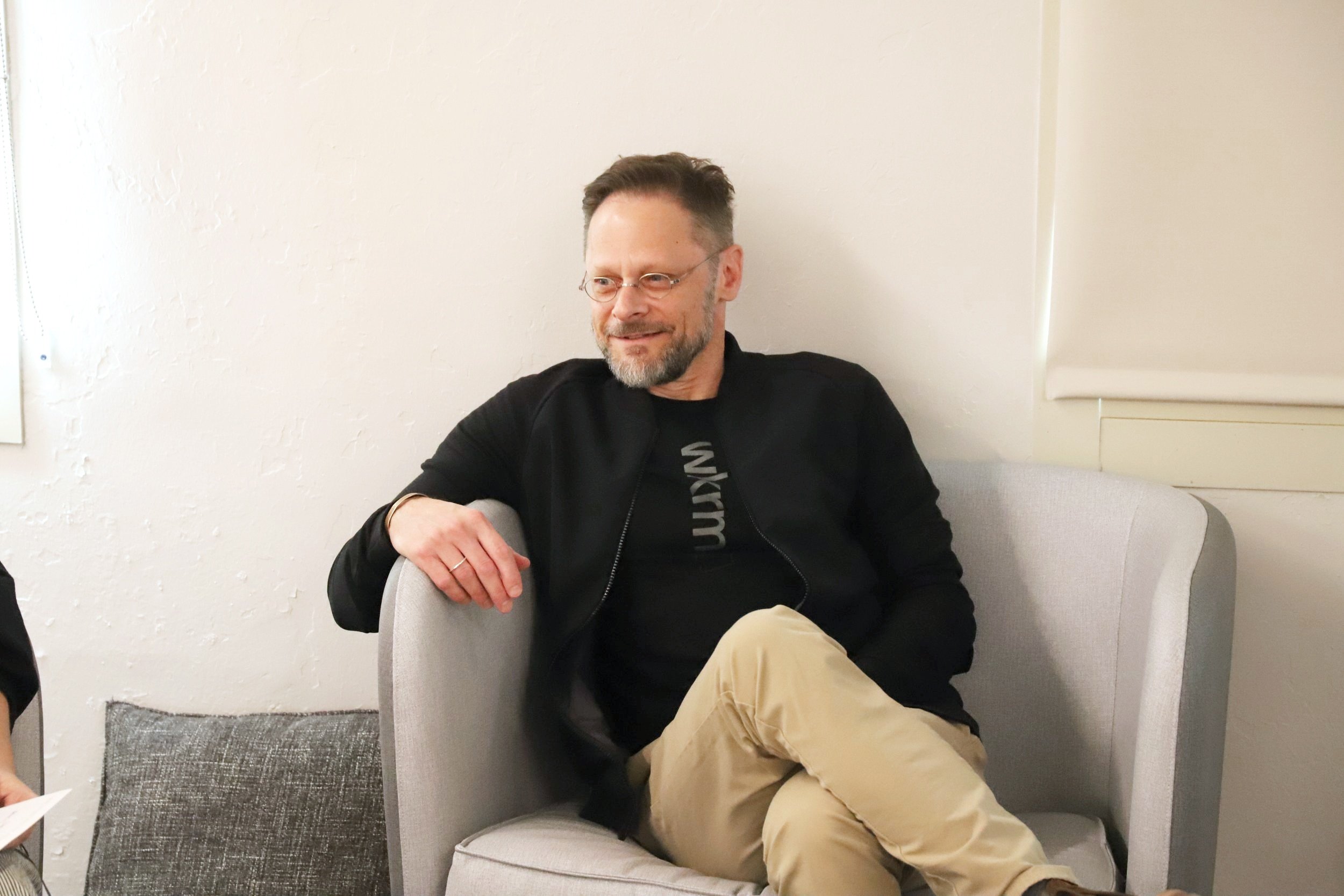
In the studio
-
wkrm designers Amy Li and Jennifer Rodriguez discuss ideas that emerged from their research about strengthening student relationships in the College of Liberal Arts
Using mindsets and methods of design
-

Framing problems and eliciting insight
In wkrm students learn a contemporary form of design based on inquiry and action. In the service of a client and key stakeholders, they learn to form teams, build chemistry, and frame the client’s problem by exploring historical data, building rapport with the client, and combining that new knowledge with their own hunches.
With a problem frame to guide their research, they begin a process of understanding the human factors of the frame using interviews and observational research to elicit insight.
Learning outcomes include:
How to work collaboratively with project team members
How to build and use curiosity to inspire designerly ways of being, thinking, and doing
How to frame and reframe problems using intentional methods
How to make qualitative observations about human behavior and social/cultural contexts
How to generate meaningful insights based on qualitative observations
-

Generating ideas derived from research
With a foundation of insight to build upon, student teams learn intentional methods for “ideation”, or how to generate targeted, thoughtful, informed ideas that address different parts of the problem frame.
The acts of ideation are both individual and communal. The teams co-design potential solutions - with each other, with the people who might use their ideas, and with the client team.
Learning outcomes include:
How to write design criteria that dictate what their design solutions must do to address needs and craft meaningful experiences
How to translate insights and criteria into design concepts and reframed problem statements
How to produce quantities of ideas that yield more specific, systemic concepts and solutions (and inform prototypes)
-

Prototyping, testing, iterating, and storytelling
After prioritizing the most relevant (and provocative) ideas with their client, students learn about ways and means of prototyping in order to elicit more particular insights.
This phase teaches teams humility as they watch their favorite ideas fail at some level while understanding quickly how to improve an idea to make it better.
Teams complete the process through storytelling, design documentation, and asset delivery so their client can use the solutions to inform strategy, planning, and launch pilot programs.
Learning outcomes include:
How to plan and produce prototypes that provide deeper insights into the design work
How to show and tell compelling stories that have an impact
How to physically organize design assets and determine the best way to deliver the work to a client team
Prof. Jon Freach
Jon began teaching wkrm in Spring 2020. He has led 8 student cohorts through remote and in-person courses, delivering insight, speculative design, prototypes, and design systems to clients in the City of Austin, grocery and real estate industries, and higher education.
Jon has a 30-year background in design. Currently, he is an Associate Professor of Practice at The University of Texas at Austin School of Design and Creative Technologies, and the Center for Integrated Design.
Jon also works with Bloomberg Philanthropies providing design coaching and Civic Design direction for cities in the Bloomberg-Harvard City Innovation Program and the Global Mayors Challenge. Since 2018 he has worked with the cities of:
Lincoln, NE developing an autonomous vehicle system to decrease congestion
Durham, NC prototyping incentivization strategies to increase public transit ridership
Tulsa, OK improving staff morale in their Animal Welfare Center
Arlington, TX integrating mental health and wellbeing services between city and county agencies
Oklahoma City, OK increasing community amongst seniors in the COVID pandemic
New Orleans, LA re-establishing trust with residents by making the street repair process more inclusive, visible, and understandable
Moncton, New Brunswick CA developing methods to help residents, businesses, and city stakeholders to meet municipal net-zero emissions goals
From 2008-2018, Jon was a Principal Designer and Executive Director of Design Research at frog, one of the world’s largest design agencies, where he provided client project consultation, organizational leadership, and mentorship to a global community of design, strategy, and technology staff.
Publications
Design in the Civic Space: Generating Impact in City Government
Stephanie Wade and Jon Freach
Published in the ADMC 2022 Academic Design Management Conference Proceedings (p87)
Writing and Research website >
Design Patents
Wayfinding: System and Method for Managing Signage and wayfinding Elements
United States Patent US20070100540 A12
November 2006
Read here >
Graphical User Interface
United States Patent US6710788 B13
December 1996
Read here >
